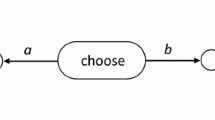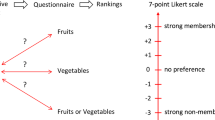Abstract
Human reasoning about and with uncertainty is often at odds with the principles of classical probability. Order effects, conjunction biases, and sure-thing inclinations suggest that an entirely different set of probability axioms could be developed and indeed may be needed to describe such habits. Recent work in diverse fields, including cognitive science, economics, and information theory, explores alternative approaches to decision theory. This work considers more expansive theories of reasoning with uncertainty while continuing to recognize the value of classical probability. In this paper, we discuss one such alternative approach, called quantum probability, and explore its applications within decision theory. Quantum probability is designed to formalize uncertainty as an ontological feature of the state of affairs, offering a mathematical model for entanglement, de/coherence, and interference, which are all concepts with unique onto-epistemological relevance for social theorists working in new and trans-materialisms. In this paper, we suggest that this work be considered part of the quantum turn in the social sciences and humanities. Our aim is to explore different models and formalizations of decision theory that attend to the situatedness of judgment. We suggest that the alternative models of reasoning explored in this article might be better suited to queries about entangled mathematical concepts and, thus, be helpful in rethinking both curriculum and learning theory.
Résumé
Le raisonnement humain au sujet de l’incertain est souvent en conflit avec les principes des probabilités traditionnelles. Les effets d’ordre, le biais de représentativité et la tendance à croire au fait accompli suggèrent qu’on pourrait développer une série complètement différente d’axiomes des probabilités, ou même que ceux-ci seraient en fait être nécessaires pour décrire de telles habitudes. De récents travaux dans des disciplines diverses, incluant les sciences cognitives, l’économie et la théorie de l’information, explorent de nouvelles approches à la théorie de la décision. Le présent travail prend en considération des théories plus vastes de raisonnement sur l’incertain, tout en continuant de reconnaître la valeur des probabilités traditionnelles. Dans cet article, nous présentons l’une de ces approches alternatives, appelée probabilités quantiques, et nous en analysons les applications au sein de la théorie de la décision. Les probabilités quantiques visent à formaliser l’incertain comme un trait ontologique de l’état des choses, proposant ainsi un modèle mathématique pour l’intrication, la dé/cohérence et l’interférence, qui sont tous des concepts d’une pertinence onto-épistémologique unique pour les théoriciens sociaux qui oeuvrent dans les disciplines trans-matérialistes. Nous proposons qu’un tel travail soit considéré comme partie intégrante du virage quantique que prennent les sciences humaines et les sciences sociales. Notre objectif est d’explorer différents modèles et formalisations de la théorie de la décision qui traitent du situationnisme dans le raisonnement. Nous estimons que les modèles alternatifs présentés dans cet article pourraient mieux se prêter aux questions portant sur les concepts mathématiques d’intrication, et pourraient donc servir à repenser aussi bien les curriculums que les théories de l’apprentissage.



Similar content being viewed by others
Notes
This distinction is sometimes referred to as Bayesian versus frequentist. In this paper, we explore alternative kinds of probability (focusing on quantum models). There are many other types of probability as well and, as Gillies (2000) argues, they may each offer valid interpretations of the particular contexts from which they emerge.
Indeed, Barad argues that the results of experiments conducted with the Stern-Gerlach apparatus, which measures the spin of particles along different axes, do not make sense if interpreted using Heisenberg’s assumption that measurement disturbs particles (see pp. 258–263).
Notably, Niels Bohr borrowed the notion of incompatibility from William James (Pothos and Busemeyer 2013).
Though still today ambiguities remain over how to interpret the physical meaning of this mathematical equivalence (Barad 2007).
Von Neumann went on to seek alternatives to the Hilbert space model.
This blurring might help shed light on the important role of forgetting in learning (de Castro 2013).
References
Aerts, D., Broekaert, J., Gabora, L. & S. Sozzo. (2013). Quantum structure and human thought. Behavioral and Brain Sciences, 36, 274–276.
Atmanspacher, H. (2013). At home in the quantum world. Behavioral and Brain Sciences, 36, 276–277.
Barad, K. (2007). Meeting the universe halfway: Quantum Physics and the Entanglement of Matter and Meaning. Durham, NC: Duke University Press.
Barad, K. (2012a). Intra-active entanglements: An interview with Karen Barad. Kvinder, Kon & Forskning, NR. 1-2. 10–23. Available at koensforskning.soc.ku.dk /kkf/for side bokse/nyeste/Interview_Karen_Barad.pdf/
Barad, K. (2012b). Nature’s queer performativity. Kvinder, Kon, & Forskning NR 1-2, p. 25–53.
Behme, C. (2013). Uncertainty about the value of quantum probability for cognitive modeling. Behavioral and Brain Sciences, 36, 279–280.
Busemeyer, J. R., Pothos, E. M., Franco, R. & Trueblood, J. S. (2011) A quantum theoretical explanation for probability judgment errors. Psychological Review 118(2), 193–218.
Cosmides, L. & Tooby, J. (1996). Are humans good intuitive statisticians after all? Rethinking some conclusions from the literature on judgment under uncertainty. Cognition, 58, 1–73.
de Castro, A. (2013). On the quantum principles of cognitive learning. Behavioral and Brain Sciences, 36, 281–282.
de Freitas, E. (2017). The temporal fabric of research methods: Posthuman social science in the digital data deluge. Research in Education.
de Freitas, E. & Sinclair, N. (2014). Mathematics and the body: Material entanglements in the classroom. Cambridge: Cambridge University Press.
de Freitas, E. & Sinclair, N. (Eds.). (2017). What is a mathematical concept? Cambridge University Press.
Fischbein, E. & Schwartz, D. (1997). The evolution with age of probabilistic, intuitively based misconceptions. Journal of Research in Mathematics, 28(1), 96–105.
Franco, R. (2009) The conjunction fallacy and interference effects. Journal of Mathematical Psychology, 53, 415–22.
Gillies, D. (2000). Philosophical Theories of Probability. London-New York: Routledge.
Grace, R.C. & Kemp, S. (2013). Quantum probability and comparative cognition. Behavioral and Brain Sciences, 36, 287.
Hacking, I. (1975). The Emergence of Probability. Cambridge: Cambridge University Press
Hampton, J.A. (2013). Quantum probability and conceptual combination in conjunctions. Behavioral and Brain Sciences, 36, 290–291.
Hansen, M. (2015). Feedforward: On the future of twenty-first century media. Chicago: University of Chicago Press.
Inhelder, B. & Piaget, J. (1958). The growth of logical thinking from childhood to adolescence. London: Routledge and Kegan Paul.
Kahneman, D., Slovic, P. & Tversky, A. (1982). Judgment under uncertainty: Heuristics and biases. Cambridge University Press.
Pothos, E. M., & Busemeyer, J. R. (2009). A quantum probability explanation for violations of ‘rational’ decision theory. Proceedings of the Royal Society B, 276, 2171–2178.
Pothos, E., & Busemeyer, J. (2013). Can quantum probability provide a new direction for cognitive modeling? Behavioral and brain sciences, 36, 255–327.
Savage, L.J. (1954). The Foundations of Statistics. John Wiley & Sons.
Shanteau, J. & Weiss, D.J. (2013). Physics envy: Trying to fit a square peg into a round hole. Behavioral and Brain Sciences, 36, 306–307.
Sutherland, S. (2007) Irrationality (2nd ed.). London: Pinter and Martin.
Tenton, K. & Crupi, V. (2013). Why quantum probability does not explain the conjunction fallacy. Behavioral and Brain Sciences, 36, 308–310.
Trueblood, J. S. & Busemeyer, J. R. (2011) A comparison of the belief-adjustment model and the quantum inference model as explanations of order effects in human inference. Cognitive Science, 35(8), 1518–52.
Tversky, A. & Kahneman, D. (1983) Extensional versus intuitive reasoning: The conjunction fallacy in probability judgment. Psychological Review, 90(4), 293–315.
Tversky, A. & Shafir, E. (1992) The disjunction effect in choice under uncertainty. Psychological Science, 3, 305–309.
Wang, Z. J., Busemeyer, J. R., Atmanspacher, H. & Pothos, E. M. (2013) The potential for using quantum theory to build models of cognition. Topics in Cognitive Science.
Watson, J.M. & Moritz, J.B. (2002). School students’ reasoning about conjunction and conditional events. International Journal of Mathematics Education in Science and Technology, 33, 59–84.
Wendt, A. (2015). Quantum mind: Unifying physical and social ontology. New York: Cambridge University Press.
Author information
Authors and Affiliations
Corresponding author
Ethics declarations
Conflict of Interest
The authors declare that they have no conflict of interest.
Rights and permissions
About this article
Cite this article
de Freitas, E., Sinclair, N. The Quantum Mind: Alternative Ways of Reasoning with Uncertainty. Can. J. Sci. Math. Techn. Educ. 18, 271–283 (2018). https://doi.org/10.1007/s42330-018-0024-1
Published:
Issue Date:
DOI: https://doi.org/10.1007/s42330-018-0024-1




